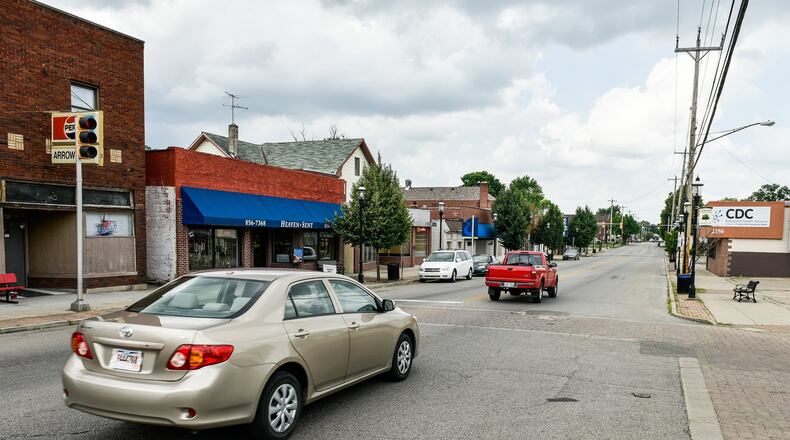Brandon Saurber, formerly the city’s director of Strategy & Information, will become the Director of Neighborhoods and receive the same annual salary of $102,190.
Also on his staff will be Public Communications Specialist Jacob Stone, keeping the same position and salary of $68,827, Peggy Bange, a former project manager in the city’s Department of Infrastructure who now will be an engagement specialist for the new department, with her same salary of $74,152 and new hire Brooke Wells, the former VISTA member, who will be paid $40,000 and will be the neighborhood coordinator.
The two new VISTA members, Ellen Rakowski and Joshua Clair, will not receive pay from the city but will work in city offices with the department.
City Manager Joshua Smith during his State of the City speech last week noted many city neighborhoods are struggling. A number of them have residents who have been complaining about thefts, drug abuse on their blocks and other problems.
“We’re only as strong as a community as our weakest link,” Smith said, “and we know we can go into many of our neighborhoods, and they’re struggling. We have blight, we have roads that need to be improved, and we literally have blocks that are teetering right now as we try to stabilize some of the properties where you’ve had a lot of longtime Hamiltonians living that want to stay, and they’re questioning right now should they.”
Smith announced the city has had $48.9 million in investment in the past 12 months. He expects to have another $270.5 million investment within the next 24 to 36 months, much of it distributed throughout the city, including the immense Spooky Nook Sports Champion Mill, former Hamilton West Shopping Center and a proposed private apartment and retail development near Miami University’s Hamilton campus.
Not only is investment in Hamilton accelerating, but it’s happening throughout the city, Smith said. The city most prominently hopes to improve or create business districts in its Lindenwald and Second Ward neighborhoods, two areas for which Miami University planning students have created economic-development strategies.
Mayor Pat Moeller said he sees a need to improve residents’ job-readiness skills and career training.
Saurber said the goal of the new department will be to “retain and attract residents to safe, clean and engaged neighborhoods.”
Hamilton’s 17Strong program to strengthen the 17 neighborhoods, which was founded by Council Member Kathleen Klink and others and maintained mainly by citizen volunteers, now will be better backed by city staff, officials said. The new department will also oversee the city’s electronic “311 system,” which is intended to let residents and business people alert the city to issues, such as potholes, crimes and other problems.
Officials said the system was not as effective as it was meant to be, which they learned after residents complained their complaints about neighborhood crimes and other problems were not being answered.
“There wasn’t really a department that owned the neighborhoods initiative of the city, so 17Strong had always sort of been supported by, if you will, a hodge-podge of different city staff,” Saurber said. “So, for one, it was finally giving that a home, and also recognizing that our 311 system and the general oversight over that did not necessarily have a home. So it was really just looking at communication, coordination and customer service to the residents.
“We’re kind of like the second-shift department, because we go to every single neighborhood meeting, we go to every single standing committee and ad hoc committee of 17Strong, and it enables us to be more places, to try to keep our finger on the pulse of what those concerns and aspirations are, as they vary across neighborhoods.”
Saurber said the city will continue conducting its every-two-years surveys among city neighborhoods again next year to evaluate perceptions of safety, cleanliness, engagement and community pride within each of those areas, as well as their problems and aspirations.
Saurber said he believes Hamilton neighborhoods are more engaged with city government and each other because of 17Strong. But with the opioid crisis that is driving crime and homelessness in the city, and the increased discussions of those topics, it is difficult to know whether residents’ overall perceptions of safety and cleanliness are improving or worsening, he said.
Opinions differ on “whether or not this is just because we’re more aware of it, or if it’s getting worse,” he said. “I think generally, more people are in agreement that it is a worsening issue — not just her in Hamilton, clearly, but an issue that affects our neighbors nonetheless.”
With homeless people that have been living in neighborhoods like Lindenwald, the North End and parts of the West Side, “There’s no doubt that those people are suffering and in need of assistance, but we also can’t ignore the sense of insecurity that sometimes that brings about to the neighbors. It’s a tough thing to work through.”
RELATED: Local man creates ‘Blessing Box’ to provide food, other items
About the Author
